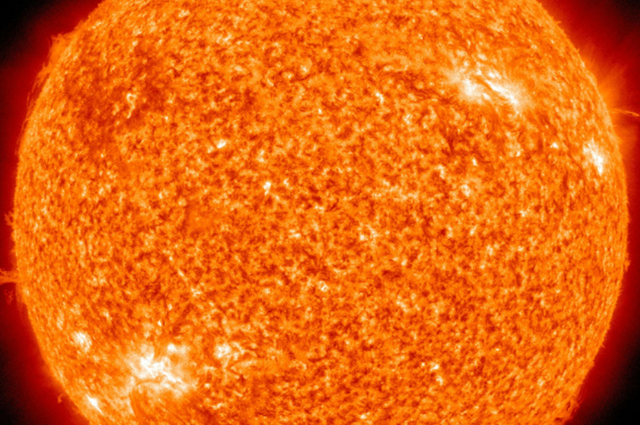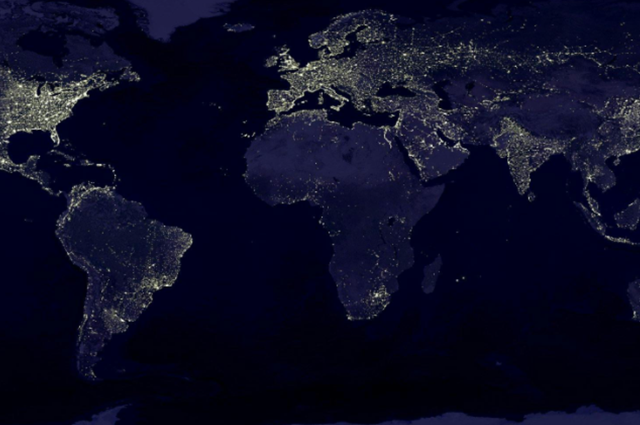
The alarming surge in the global temperature in the last decade (2014-2023) has been a matter of concern. This increment of 1.18 degrees Celsius is accelerating thrice the temperature rise since 1850.
The impacts of this climate change are visible as melting glaciers, intense heat waves, and tremendous carbon emissions. One of the most significant impacts is increasing wildfires. The recent case of the devastating California fire is a trailer for an upcoming horrific movie. Consequently, 2025 is supposed to be warmer than 2024.
UK Scientists Plan to Dim the Sun Soon to Regulate Earth’s Temperature

Considering sunlight as a medium to propagate heat to the earth's surface, UK scientists are planning to dim the sun. This is one of the most powerful geoengineering projects, funded with a hefty amountof 50 million British pounds by the Advanced Research and Invention Agency (ARIA). This controversial experiment has received a total of 800 million British Pounds, with 50 million British Pounds being reserved for the project.
Professor Symes, the head of ARIA, has revealed a few secrets of this project. According to him, this program aims at exploring sustainable methods to cool the earth, preventing climate catastrophes. The current progress has already introduced many risks. Melting of Arctic sea ice, collapsing of land-based ice sheets, ecosystem loss, and devastation of the Amazon rainforest are some of the causes of global sea level rise. They will be able to buy time to decarbonize the planet. Additionally, there won't be the use of toxic substances.
Methods to decarbonize the planet

Although there is no assurance on the resolution of the issues, Professor Symes has revealed some methods to get the desired results. They could use the reflective particles' cloud in the atmosphere. Clouds would be made brighter using seawater sprays. Bait-trapping blankets in the form of thinning clouds could also be one of the methods. According to them, these methods could automatically reduce the consumption of fossil fuels, putting an end to climate change issues. However, some people are already fearing a considerable shift in the rain patterns, affecting agriculture and food production.
How could the Stratospheric Aerosol Injection (SAI) impact the world?

Of course, scientists and researchers have come up with a brilliant idea to cool the earth by dimming the sun. The matter of concern, however, is the number of side effects that all of humanity would be facing in the long run.
- Depletion of Ozone Layer
Ozone, which helps Earth receive only a major part of the sunlight, is going to be threatened by the sulfate contents of this experiment. - High dependence on technology
There isn’t sufficient technological stuff and knowledge to keep up with the processes. It may cause a huge demand for technology to keep the project going. - Rain patterns could alter
One of the worst side effects of this project would be altered rain patterns. It is surprising how opposite the results of this experiment could turn out. - Acid Rain
Acid rain isn’t something new. However, it could get worse with this project when rains would heavily comprise acids and chemicals, particularly sulfates.
Advantages of the SAI Project
Every coin has two faces, right? It’s time to discuss the pros and advantages of this project. The major advantage of this project would be a significant reduction in the overall temperature of the earth. Secondly, it could bring rapid cooling and a dip in intense heat waves, droughts, and other problems.
- Multifaceted Impacts of the Sulfate Aerosol Injection Project
The latest initiative by the government of the UK will have a number of impacts on various fields. Here are some impacts it would have on social, economic, and environmental aspects. Social Impacts
The first and foremost impact of this project would be on humanity. Vulnerable populations would be significantly affected by such operations. The air quality and temperature wouldn’t be favorable for humans.- Global Food Security Issues
Due to a significant change in the rain patterns and overall temperature, there would be notable changes in agriculture. Consequently, it would result in a global food insecurity. - Migration and Displacement
Once nature experiences a turmoil in its functioning, it’s obvious humans would be forced to migrate and displace for survival.
Economic Impacts
- Agriculture
A difference in temperature and weather patterns would adversely affect farming and overall productivity.
- Energy Consumption
With a dip in overall global temperatures, there won’t be a huge energy demand. However, it’s uncertain how overall consumption patterns could be dependent on solar energy.
- Impact on industries
Most of the industries, like tourism, fishery, forestry, and others, would be significantly affected.
- International Relations
It’s uncertain how this project would shape global relations. In short, it’s unpredictable how nations across the world would cooperate and help each other sustain and survive.
Measures to Increase the Efficiency of SAI
Every new project brings in potential risks, pros, cons, and unpredictable issues. Here are some measures to ensure the project’s efficiency.
- Effective Research and Monitoring
The stepping stone for any initiative is effective research. A team of experts can discuss and come up with possible risks and notable issues associated with this project.
Furthermore, monitoring is the key to the inspection of the work. Procedures implemented within the project should be checked and monitored in the short and long run. - International Agreement and Transparency
Since this project is a global-level initiative, agreement of nations is extremely important. Apart from mutual agreement and cooperation, transparency is important to ensure efforts pay off. - Risk Assessment and Backup Plan
It’s important to note the risks resulting from the project. It’s possible through effective monitoring and feedback. Moreover, it’s necessary to have a plan B in case the plan backfires. - Adaptive Management Techniques
The overall management should focus on flexibility, ensuring changes in the plan whenever required. Additionally, the changes should be based on regular feedback, impacts, and observations. - Evolution
The scope for evolution in this plan is huge, demanding a continuous evaluation and development. Research, monitoring, and feedback would fuel the project from the very beginning. - Public Awareness
Lastly, it’s important to have a discussion with people worldwide. Conducting seminars, workshops, and other programs to spread awareness about this program can be some ways to make people aware. - The Takeaway
Nature has gone through a lot in the last fifty years, the past decade being the worst. Therefore, UK scientists’ plan to dim the sun is a recent initiative by the Government of the UK. However, it’s important to sit back, monitor, analyze, and be ready for evolution. This write-up discusses all the possible risks and consequences of the SAI Project.
